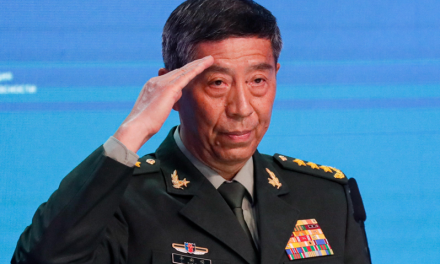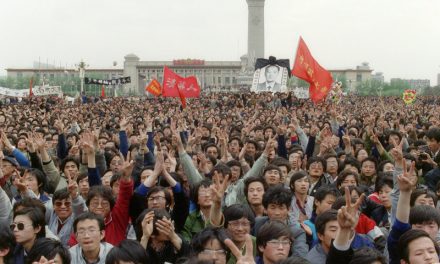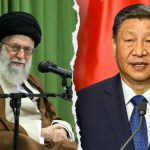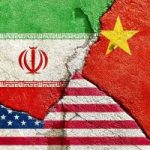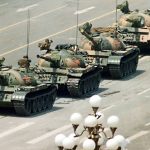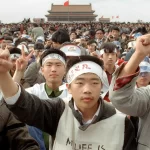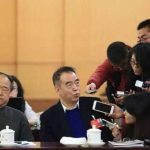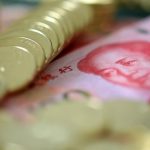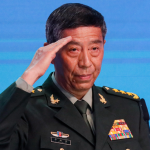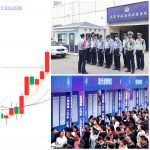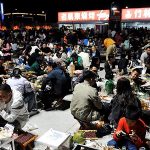By: Bai Ding
Just recently China celebrated with great fanfare the elimination of extreme poverty and the beginning of a moderately prosperous life for all its people, and the whole world also followed suit with admiration and applause. But now China’s economy is showing signs of a sudden slowdown. The youth unemployment rate has become a state secret, no longer disclosed to the outside world. The world’s major investors are again reiterating that their capital returns will be dragged down by China.
At this time when people are alternating between praising and criticizing China’s economic achievements, those who are least affected and most indifferent to the quality of China’s economy are probably China’s poor people, those who are now being said to have been lifted out of poverty. This is because they were used to poverty when China’s economy was booming, and now that China’s economy is in decline, they are still poor. The quality of China’s economy really has nothing to do with them.
Since the topic is China’s poor people, we need to first clarify what poverty is. “Poverty” is a topic that attracts widespread attention. The poor want to escape poverty, the rich want to avoid falling into poverty, and philanthropists are trying to find ways to help the first two groups realize their wishes. The answers to what constitutes poverty can vary widely. A white-collar couple in New York may feel cash-strapped because they don’t have $250,000 to spare to take their discontented five-year-old son on a trip on a submarine to see the wreckage of the Titanic. And a disabled person in Beijing who receives only a subsistence allowance will feel hundreds of times richer than someone without insurance altogether. In order to understand poverty and solve its associated problems, an objective standard for defining poverty is needed.
Ways to define poverty
Most people would agree with this description: poverty equates to low income and a poor quality of life.
The most commonly used poverty standard in the world is the absolute poverty line set by the World Bank. According to this standard, if a person’s daily living expenditures are less than 1.99 2015 US dollars, then he is living in absolute poverty.
It should be noted that 1.9 dollars per person per day here refers to living expenses, not income earned. For example, if a person’s daily income is US$10, which is much higher than US$1.90, that should not be considered absolute poverty. But if this person has to use five of the 10 dollars to repay a bank loan, and saves another $2 dollars as future retirement savings, and finally uses the remaining 3 dollars to support his family of four, divided up equally among them, their living expenditures are each less than a dollar a day. So, although his daily income is US$10, his family’s actual living standard is far below the absolute poverty line set by the World Bank, so they are in a state of absolute poverty.
Estimating China’s poor population
Having a rule for classifying poverty, it should be simple to determine the number of poor people. According to the above World Bank standard, 10% of the world’s population is currently in absolute poverty.
However, when it comes to the proportion of poor people in each country, the picture becomes complex, even contradictory.
All national governments generate their own statistics and report their respective poverty headcount ratios to the United Nations. According to the data for the end of 2020, using compare the proportion of poor people in China and several other representative countries in the world:
China, 0%; Switzerland, 6.6%; South Korea, 14.4%; United States, United Kingdom and Sweden, 15%; Japan, 16.1%.
If they use their common sense, the Chinese public will find it difficult to understand these poverty ratios. China announced on November 23, 2020 that it had completely eliminated extreme poverty, so the proportion of the poor population was zero, which is easy in principle to understand. South Korea has just completed decades of economic growth, but there may still be a part of the population that has not benefited and is still in poverty. This can also be explained. But why do high-income countries like the United States and the United Kingdom, and high-welfare countries like Japan and Sweden, not only still have poor people, but the poverty rate is as high as 15% of the national population?
The answer is actually quite simple: except for China, the above countries use another poverty classification standard instead of the World Bank’s poverty standard. The high-income and high-welfare countries listed above use the national median household income as a reference and use relative standards to classify poverty.
Taking Japan as an example, poverty is defined there as having a household income less than half of the national median household income. According to Japan’s 2018 household income standards, Japanese families with an annual income of less than 1.22 million yen are considered poor. Converted into RMB, Japanese families with an annual household income of less than 75,000 RMB are classified as poor families. These households account for approximately 16% of Japan’s total population.
The poverty classification standards of other high-income countries such as the United States and the United Kingdom are similar to those of Japan, defined using relative standards.
As we can see, in these high-income and high-welfare countries, the classification of poor families is the result of comparison with the general living standards of the country. A family is not defined as poor because those families are unable to meet the most basic survival needs.
This leads to another definition of poverty — “relative poverty.” As the name suggests, relative poverty is the relative state already mentioned above, the share of the population that is lower than some defined general living standard of the country’s people.
China neither adopts the World Bank’s classification standards nor uses the relative-poverty classification standard. Instead, it creates a poverty classification line with “Chinese characteristics.”
China’s current extreme-poverty standard or poverty-alleviation line is an annual income of 2,300 yuan per person, which is equivalent to an income of 1.7 US dollars per person per day. As emphasized above, the World Bank’s US$1.90 poverty standard refers to actual living expenses rather than income levels. Obviously, China’s line for “extreme poverty” is smuggled in to replace the World Bank’s actual living expenses with China’s self-created income levels. After this substitution, China’s poverty standard becomes far below the World Bank’s absolute-poverty standard, thus greatly reducing the number of China’s poor people on paper.
However, even according to China’s own debased poverty standards, owing to the inability to conduct independent surveys and obtain complete statistical data, the outside world is still unable to determine the true number of China’s poor, and it is impossible to verify whether China has really completely eliminated extreme poverty under the standard it itself has set.
The significance of using relative poverty as the standard
In interpreting poverty ratios in various countries above, the criterion of relative poverty was introduced. So, why do some countries, especially high-income and high-welfare countries, use this standard?
Taking into account the huge differences in economic development and living standards among countries around the world, in 2017 the World Bank supplemented and refined the US$1.90 poverty standard that has been implemented for many years. The new detailed poverty standards define poverty differently for each of the World Bank’s four categories of countries’ economic development:
Low-income countries: the poverty line is the existing marker for individual extreme poverty, US$1.90 in living expenditure per day.
Lower-middle-income countries: the poverty line is higher, at US$3.20 in living expenditure per person per day.
Higher-middle-income countries: the poverty line starts at $5.50 in living expenditure per day.
High-income countries: US$21.70 in living expenditure per day.
This is an intermediate standard, between the World Bank’s absolute-poverty standard and the relative-poverty standard used by high-income countries.
China has become the world’s second largest economy, and its per capita GDP surpassed US$10,000 in 2020, making it an upper-middle-income country. Therefore, according to the World Bank’s new detailed poverty standards, in China, if the living expenditures per person per day are less than US$5.50, they are considered poor. Converted into RMB, the poverty line is daily living expenditures per person of less than 35 yuan, or monthly living expenditures per person of less than 1,050 yuan. And note that this is living expenditures and not income.
Chinese officials have not released a figure for the quantity of China’s poor population based on this detailed poverty standard.
Then-Chinese Prime Minister Li Keqiang said at a press conference in 2020 that 600 million people in China have a monthly income of less than 1,000 yuan. (Note that this again does not refer to living expenses.) Based on this figure, the number of people in China whose monthly living expenditures do not meet the poverty line for an upper-middle-income country should be much higher than 600 million, which means that at least half of the Chinese population lives below the poverty line.
The purpose of the World Bank’s detailed poverty standards is to more accurately reflect the positive correlation between the country’s overall economic-development level and the living standards of families. In other words, if the pace of improvement in family living standards fails to keep pace with the improvement in the country’s overall economic development level, then the country’s development has not benefited the people. However, due to censorship of information, most Chinese people do not know of the World Bank’s absolute poverty standard of US$1.90, and even fewer know about the Bank’s more sophisticated poverty standards.
Now let’s return to the above question: why do high-income, high-welfare state countries use the “relative poverty” standard to define their country’s poor population?
The answer is to improve the overall living standards of all citizens. This sounds no different from the CCP slogan that the Chinese people are familiar with, but the essential difference is that these countries do not confine themselves to slogans, but actually do it.
China has eliminated “people in poverty,” but the poor remain
Whether considering absolute and extreme or relative poverty, poverty is a relative concept and therefore cannot be completely eliminated. It’s like the impossibility of completely shaving off one end of a pencil.
For a government that is responsible for its citizens, the existence of poverty means that the government must work harder to improve the living standards of its poor citizens and narrow the gap between the poor and the rich. In such a country, even people in poverty will feel the continuous improvement of their quality of life due to assistance from the state. With the help of various sustainable kinds of support from the government, poor individuals can hope to escape poverty faster through their own efforts.
Contrarily, for a government that puts its responsibility to the people last, the existence of poor people means a financial burden and represents a scandal that makes the government lose face. What the government is eager to do is not to eliminate poverty systematically, but to reduce the measured number of poor people to zero. The Chinese government is such a government.
In China, the “good news” of eradicating poverty not only fails to effectively help people struggling in poverty, but renders them even more helpless. Because once the concept of “poor people” is “eradicated” by the government, these people struggling in real poverty will no longer receive attention, and even one-time assistance will disappear. For individuals in poverty, the hope of getting out of poverty through their own efforts will become increasingly slim.
Poverty is a curse imposed by the CCP on China
Poverty exists widely in countries around the world, but the extent varies greatly. Countries and many international organizations are trying various efforts to eliminate poverty, and different motivations and methods produce completely different results. Although individual efforts can partially improve one’s own poverty situation, successfully getting rid of poverty requires a multi-dimensional and sustained ecosystem of support coordinated by the government.
In an environment lacking the will of the government to act, the possibility of successfully escaping poverty solely through one’s own efforts is almost zero. The vast number of poor people in China live in such a dangerous and harsh environment, and that is a curse bestowed upon them by the CCP.
This piece was translated from Yibao Chinese. If republished, please be sure to add the source and link https://www.yibao.net/2023/09/11/chinese-poverty-…posed-by-the-ccp/ before the text when reposting.
The views of the author do not necessarily represent those of this journal.



